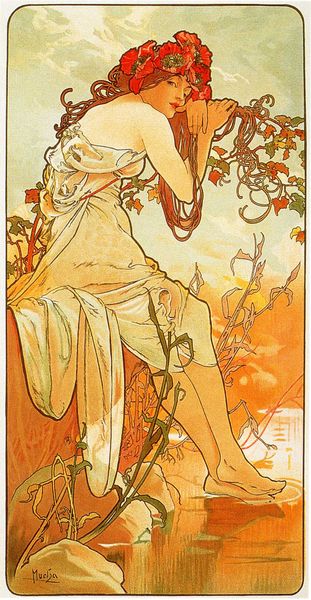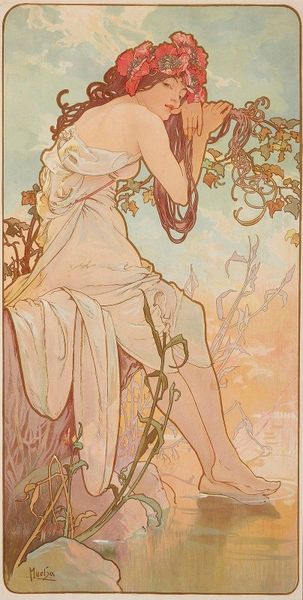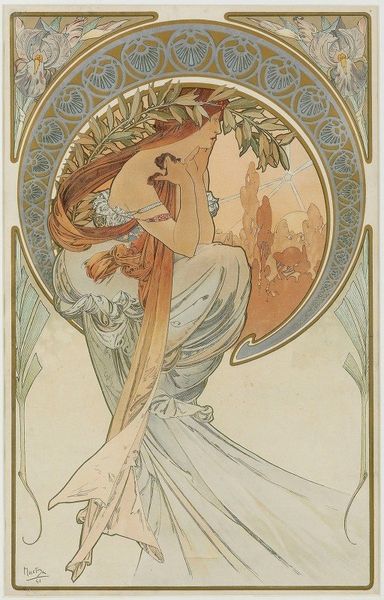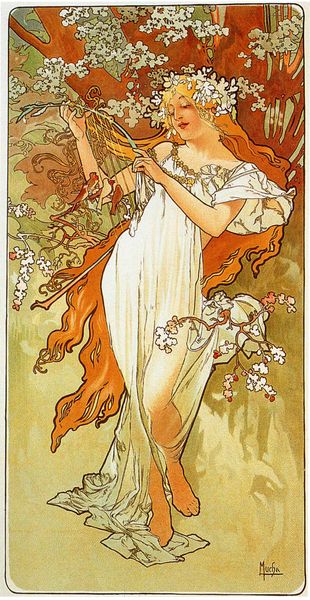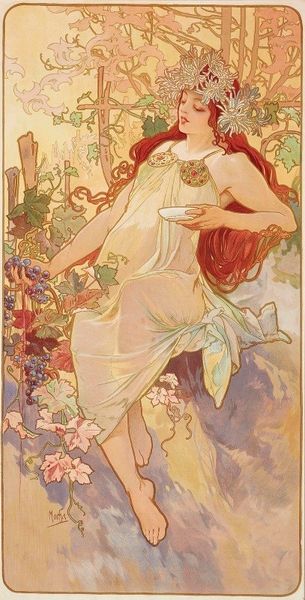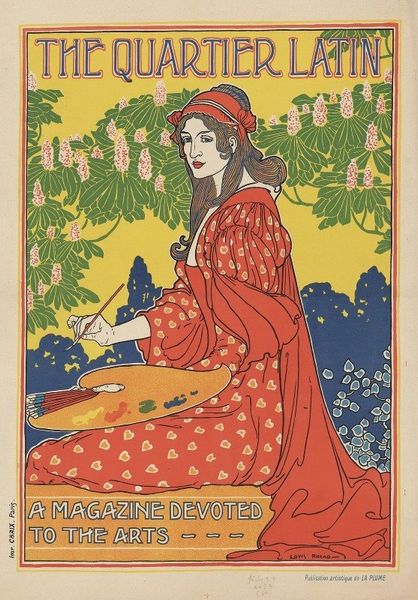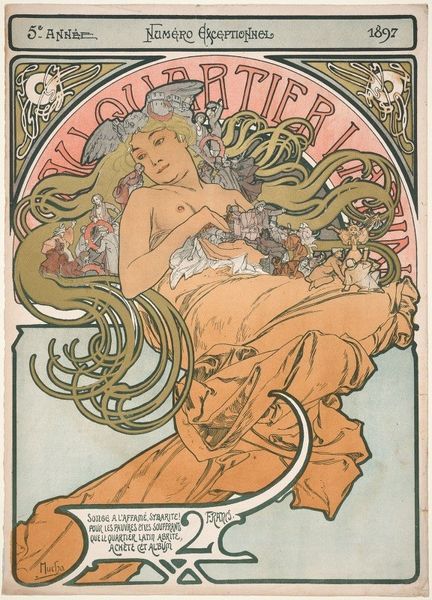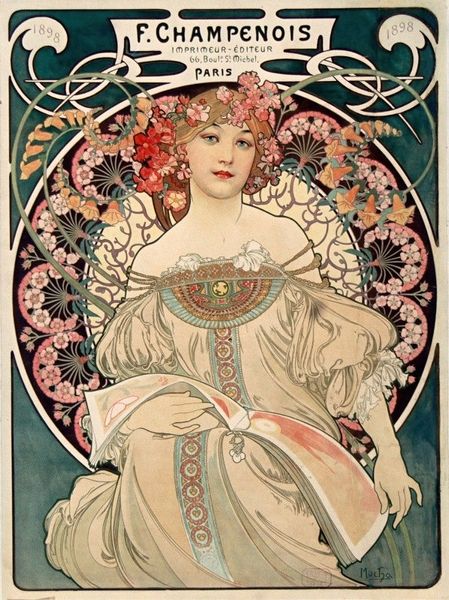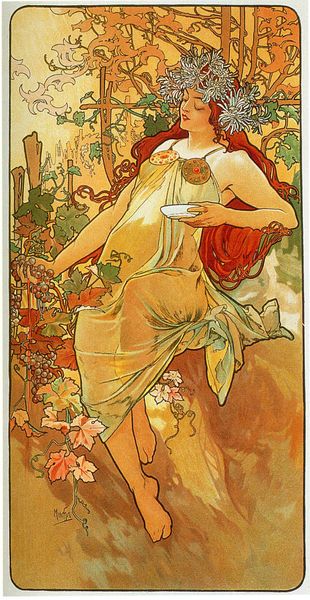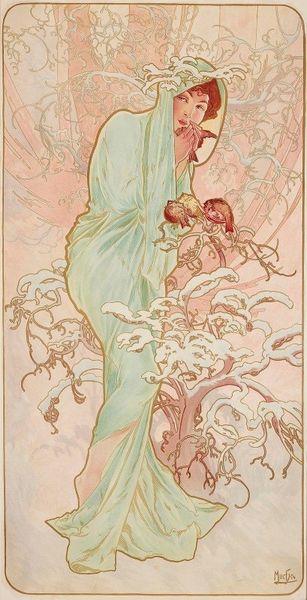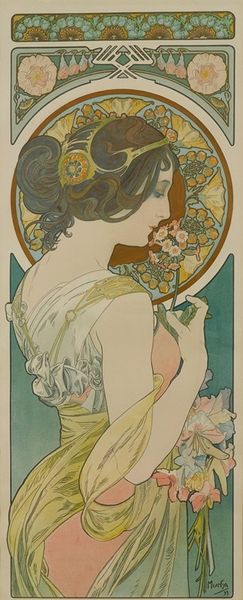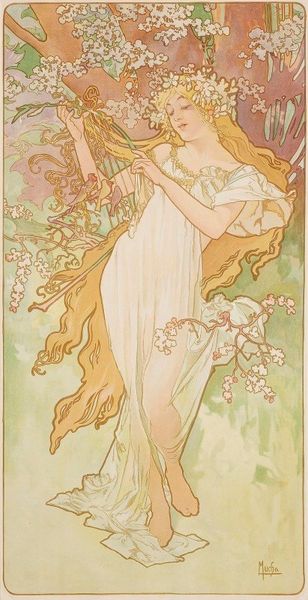
Copyright: Public Domain: Artvee
Curator: Alphonse Mucha created this piece, titled "Carriage Dealers," in 1902, and it served as a poster advertising the Philadelphia Exposition. Editor: Oh, wow, she’s giving me serious fairytale vibes. There's a softness to the color palette, like a vintage photograph gently kissed by time. And those flowing lines, pure magic! Curator: Absolutely. Mucha’s style is quintessential Art Nouveau, drawing on Romanticist aesthetics, where you have a seamless blend of figure and nature. Consider the idealization of feminine beauty intertwined with natural motifs. Her garland of flowers directly relates to the abundant plantlife. Editor: Yes! Her wistful gaze, the way her hair cascades… it’s like she's a spirit of the autumn woods, taking a moment to ponder carriage sales. Is that weird? Curator: Not at all! Let’s think about the historical context. The exposition itself represents progress and industry, so this romanticized figure actually does some interesting work here. Mucha frequently positioned women within narratives of both consumerism and mythology, embodying a complex relationship to progress and tradition. Editor: You know, for an advertisement, it's surprisingly subtle. It almost hides the commercial intent, favoring an atmosphere of ethereal beauty. That would make me buy a carriage, or two! Curator: It also promotes ideas of what a woman's place should be. What is she doing within the progress being advertised? Posing as an ornament, not really participating. I mean, if we are honest, its very seductive but also a bit unsettling when viewed from our modern lens. Editor: Well, it definitely gets you thinking! There is a sense of old and new coexisting which makes it special. A celebration of a modern event by evoking a feeling of nature, mythology and romanticism... quite brilliant if you ask me. Curator: Precisely. By considering the work through various lenses, we expose both the complex narrative and the social climate of the era in which "Carriage Dealers" emerged. Editor: It's funny, I came here thinking about dreamy lines and now I'm contemplating gender, economics, and social narratives. So much depth from one seemingly simple illustration!
Comments
No comments
Be the first to comment and join the conversation on the ultimate creative platform.
